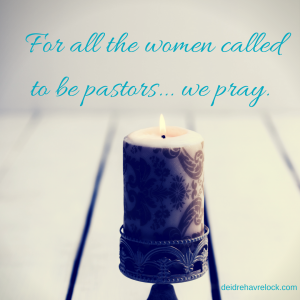Here’s an older article that deserves another read. Danielle Strickland is a Canadian and a Captain in the Salvation Army (I love the work the Salvation Army does). Go Here to see her website. Below is her insightful article written back in 2007 on the importance of mentoring women. So happy International Women’s Day to all you fabulous women out there — here’s to watching you rise!
[tweetshare tweet=”Let’s rise up and be the head, not the tail – together. An aggressive, holy, passionate commitment to women in the church will result in their freedom, and equality and I believe, a revolution. -D. Strickland” username=”deidrehavrelock”]
Article: Developing women – a method for mentoring by Danielle Strickland
The dialogue on women and leadership in the church is oceanic in scope and the truth is you could easily drown in the discussion. Many have. Some have treaded water for years and are just emerging from the tide, a bit worn out, but full of anticipation to find both feet on solid ground. Now that our legs are strong we are ready to run, hard and fast towards becoming who we already are in Christ and using our leadership gifts in and for the Kingdom.
In my experience of the church, equality is like a ‘dotcom’ company in the 90’s. It’s worth a lot – but it’s hard to cash in. It works great on occasion, but no one is sure how. Most of the time it’s elusive and evades us. The solid substance and power of true equality in the church is more like an endless ocean than a foundational truth.
The women in leadership debate is not a new discussion for the church. It’s as old as the Jewish faith itself (see Garden of Eden for details). Jesus turned traditional patriarchalism on its head (he was deeply into equality) and ushered in the fullness of the Kingdom of God where the Spirit was poured out on all flesh. But, like the uncomfortable councils of the early church, discussing the implications of Gentile believers worshipping with Jewish brothers and sisters, the devil is often in the details.
Without wading too far in the ocean of ‘gender and leadership’, I’d like to offer a few life preservers to those in the church who would like to find their footing. These barriers and some humble (and practical) suggestions as to how to overcome them are intended for all leaders. I’ve been at too many conferences for women about women leadership. Women leadership is not a topic just for women; it’s for the whole church. Male leaders need to enter the discussion and help remove barriers that prevent women from using their gifts for the Kingdom. It’s in the church’s best interest to help women find their feet. Rev. Liz Rios, founder of the Center for Emerging Female Leadership says, ‘Many women have determined that they have no time to squander on the “great debate” and are mobilizing themselves by the thousands to fulfill what we are all here for: Christ’s Great Commission. They have gone beyond the labels and are moving toward their call. Their mantra? Lead, follow, or get out of the way.’ (March/April 2005 Prism Magazine)
Potential Barriers:
1. Lack of models: glass ceiling prevents women from modeling the possibilities of strong, external gifts
I recently spoke at a National denomination leadership gathering… the subject up for vote? Women leaders. They were voting about whether women could hold senior ministry positions. I was the guest speaker, not because I was a woman (although that did come in handy) but because their theme was on urban ministry and I was modeling that in my own city. I spoke on the Friday night and Saturday was the vote. Going into the weekend the vote was neck and neck. On the Saturday after I spoke it was 3-1 in favour. The whole National church has changed its position on women. Now, although I’d like to think otherwise, I’ve got a hunch that it wasn’t my amazing speaking ability that turned the tide! I honestly think many of the leaders had never heard a woman speaker before. Why? They simply lack examples in their denomination.
Think about it: the senior pastor would be the primary speaker in an average church. If you have a rule that says women cannot be the senior pastor – you will have an absence of women speakers. Then women in your church and potential women speakers in your audience and youth group will not aim for being a senior pastor. They will aim to be a youth leader, or a Sunday school coordinator, or a missionary, but not a senior leader. They will think (by the absence of women) that women don’t ‘speak’. Now, this is an obvious example. Not every church has archaic rules about women in leadership positions (see the poor theology section). But, it remains the same principle.
If women aren’t leading in current positions of church governance (which we know they aren’t – proportionally), other women get the message. The message is: women don’t do this.
How to fix it:
- Be intentional about inviting ‘models’ of strong women leaders to your church (even if it’s as guests: worship leaders, speakers, administrative leaders).
- Highlight women leaders in your congregation. Women models are often overlooked, even when they exist. Find them and have them tell what they do and what makes them effective – testimonies, interviews. I once knew a very gifted communicator (who was a women) who didn’t feel comfortable ‘preaching’ (her background was in a very oppressive denomination) but I often asked her to ‘share’ for a few minutes about a certain scripture or topic – it always ended up in a great message for the whole congregation.
- Invite women to apply for positions available. I think every leadership team should have a balance of men and women. There is a great imbalance – so, to correct it we have to create discipline in the area. Obviously we must aim for qualified, competent and gifted men (not just token men to fill the positions available). But we must be intentional about this. One of the problems with the ‘glass ceiling’ is that the ‘male’ leaders in power don’t know women who can lead and they have to look outside of their influence circles. That can be very scary and it can backfire: I think it’s worth the risk.
2. Poor theology
This could easily turn into a ‘rant’. I’m trying really hard to keep this article from becoming a ‘femi-nazi’ diatribe. But false, archaic theology continuing to teach that women are inferior to men and are to be kept under their control is of the devil – straight from hell (I’m not doing well already!). Read the Bible again. We are all aiming for the redemption of humanity. C.S. Lewis suggested that when Christ died all of time began to work backwards (in other words, we started aiming for the garden of Eden). In that place we were created to lead. ‘We’ meaning men AND women. We were given the earth together. What created ‘headship’ is sin. Del Birkley in his book, The Fall of Patriarchy (Fenestra books/2005) suggests the origins and nature of patriarchy is a ‘fallen worldview’. So, unless we want to celebrate sin in our structures, churches and relationships – we need to correct our theology about women.1
How to fix it:
- Teach good theology. This cannot be overstated. If you think it’s too hard and don’t teach anything – people will get their theology from other sources – and unfortunately poor theology and even heresy on women leadership is everywhere. So don’t be fooled. If women and men in your congregation aren’t taught the scriptural realities of equality – they will discern it from the behaviour of your church.
- Model good theology: This is often where my own denomination is in trouble. We actually have great theology and a glorious history of equality, but our current practice and structures are in some trouble. The result is that ‘bad theology’ spreads from it. It’s quite tragic actually, to have great theology that is corrupted from your own poor behaviour. Change your behaviour to match your theology. The church should look like the Kingdom.
- Use Bible study series, sermon series, book clubs – statements in bulletins etc… women leadership support groups. Start with some deeper reading and research (see Research Box).
3. False ‘humility’
People often think that women who are confident in their own abilities are full of conceit. This can be a combination of barriers 1 and 2 (an absence of good models and bad theology) leaking into a bad attitude that is tragically prevalent in many women I’ve spoken with, in over a decade of ministry. This toxic attitude suggests to be secure in their gifts (particularly if they are strong, external ones) is pride. Often people in the church call a woman who wants to lead a ‘jezebel’ and paint her as someone who is grasping at power. A strong gifted man on the other hand is applauded when he goes for what he wants. Women need to re-check their definitions of true humility. The best definition I’ve heard: true humility is agreeing with God about who you are (not sure where I heard it, but it’s my favourite). This defining godly quality has freed me to pursue my gifts and positions of leadership without feeling like I’m manipulating and conniving to get what I desire. I’m simply agreeing with God and being a good steward of the gifts he has given me.
How to fix it:
I’ve often found the main enemy of women leaders is insecurity. This is a combination of worldly assaults (inside and out) and the enemy’s desire to see women kept down. Unfortunately the lack of intentional uplift from the church keeps the insecurity vacuum in women empty.
- Be intentional about building self-esteem in women (the younger the better).
- Celebrate good and strong women/girl leaders. Words have power (affirmation, affirmation, affirmation).
- Don’t separate your youth into women and men categories all the time. Blend the groups – make them ‘topic’ related instead of gender based.
- Host debates about what gives people value.
- Expose the ‘beauty myth’ of our culture (the costs of objectifying women etc…)
- Celebrate true beauty.
- Find female leaders early and invest in them (courses, speaking classes, responsibilities, affirmation).
4. Male circles of power and influence (existing mentoring models)
This was a similar problem with black rights in the U.S – even after the law was changed it was virtually impossible to get a job in a ‘white’ firm or office. The results of years of white dominance was… white dominance. The same is true of churches, and leadership teams where males have dominated all the influence. There is a circle of power that has to be opened up to those who don’t belong. Often this problem is exacerbated by ‘one-on-one’ mentorship. This is the choice model of mentorship in the church. One leader mentors another. The mix of a male and female in this model is problematic (for obvious reasons).
How to fix it:
- Create leadership support teams (community mentoring). Instead of one-on-one mentors, create leadership teams that offer support in different areas. Spiritual leadership, administration, preaching, pastoral care, family life, then open those groups to anyone who leads in those areas (this gets rid of a boys club mentality at the same time as an old hierarchy church model). It flattens the structure and will produce support for both senior and junior leaders with specific mentoring goals (rather than simple relationship based chatter).
- Intentional goals: again, the only way to break existing culture is to force yourself to create a new one. Ask some questions, ‘where do you meet – who invites people – how do they get invited – are there people left out?’ This will not happen ‘by accident’ and may take some time and energy to recreate a new culture in your team. It will be worth it.
- Connect. Create a connecting place to meet new leaders. After a conference, stay for an extra meal with some new leaders that you’d like to be intentional about connecting with… aim for at least one women leader in every group (to start).
5. Orphan syndrome
Women who have ‘made’ it without good mentors don’t know how to mentor, release and celebrate other women. Rev. Liz Rios founder of the Center for Emerging Female Leadership says, ‘Women in leadership are everywhere nowadays, in spite of the continued debate over whether they should be there at all, especially in the church as senior pastors. But while we may, for the most part, be everywhere, where are we when we need each other? Women experience the stress and burdens associated with the leadership positions they assume. Yet while a plethora of support groups for women center on the issues of divorce, domestic violence, healthcare, and even finances, very few opportunities exist for women to gather and talk about the successes and struggles of being a female in church leadership. Where are those women who, having struggled to believe in their call and to take that lonely leap of faith, are now looking back to help pull another sister up?’ (March/April 2006 Prism Magazine)
How to fix it:
- Find a strong women leader and ask her to start a support group for other women leaders. (Note: one of the problems in women mentoring women is that the generation before this one didn’t celebrate women in leadership, so there is a great absence of strong women mentors. Creating ‘groups’ will help with the deficiency and women who have been at leadership for sometime will have to fill the void before they feel ready. In Africa they are missing a generation of parents due to the AIDS epidemic. To battle the orphan crisis they are teaching older orphans how to parent. This is a similar solution to the women mentorship crisis in the church. Younger women need to step up. I’ve mentored many women who are much older than me but new to leadership. We’ve got to leave barriers of age, assumption and cultural sensitivities aside).
- Host courses on Biblical Equality at every mission training school (make women leaders an assumption rather than an open question).
- Create supportive structures for women leaders (flexible hours, working from home, measurable goals instead of fixed time related jobs).
- Celebrate women leaders (model this every time you can: avoid patronizing).
Conclusion
There are many more barriers that exist in the church. Not least of which is the whole structure of our church systems. The ‘business’ infrastructure, forty hour work weeks, office system and male ‘styles’ of leadership are big ones. The emerging church is celebrating her ability to release women to lead because of their flexibility and dynamic structures. We could learn from them. Women make up more than half of the church. If we are serious about impacting the world for Jesus we must get serious about releasing women in leadership. I spoke at a women’s leadership training day for HSBC (‘the world’s bank’) recently. It was weird. I thought the ‘women’s group’ thing was a church phenomenon. But it was different from most of the church events I’ve been to. The national leader of development (a man) was there and gave a speech. He said this: ‘We need you. We will change to fit your emerging needs: flexible hours, work daycares, and transparent career management is our priority. Our goal is to see over half of our senior positions filled by women before 2010.’ I wasn’t surprised to read later that HSBC was voted ‘best company to work for’ that year by their employees. What really struck me is that they modeled the Kingdom far better than I’ve ever seen in the church. Tragic, but God help us, not for long. Let’s rise up and be the head, not the tail – together. An aggressive, holy, passionate commitment to women in the church will result in their freedom, and equality and I believe, a revolution.
Danielle Strickland is a Captain in the Salvation Army, specialises in mission and has planted the cell-based Christian community in Vancouver. For current thoughts and issues read: armybarmyremix.blogspot.com
© Danielle Strickland. This article first appeared in Youthwork Magazine, August 2007 and is reproduced with permission. www.youthwork.co.uk
Footnotes:
1 WOMEN LEADERS AND THE CHURCH: three questions and three truths (Linda L. Belleville is professor of biblical literature at North Park Theological Seminary in Chicago. This is a section excerpted from her book, Women Leaders and the Church: Three Crucial Questions (Baker Book House Company, 2000). Footnotes have been omitted.)









These are very good points and definitely worth keeping in mind. However, I believe what most women must do is to simply just lead, period. And above all, STOP ASKING FOR PERMISSION !!
God gave you permission, Jesus Christ gave you permission, you DON’T need permission from “some man”. Just take your God given right and lead. And if someone doesn’t like it, well that’s too bad! Just lead, that’s all, even if no one is following, just keep on leading. You don’t see men stop leading just because someone doesn’t like it do you?